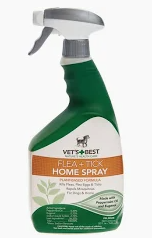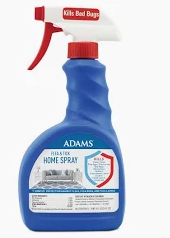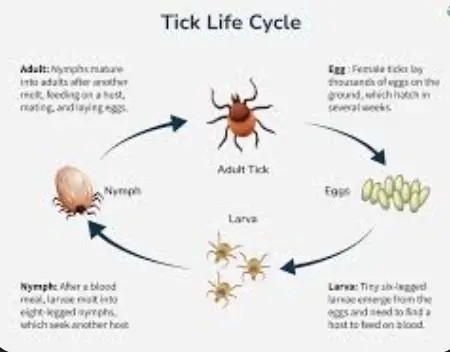Ticks can be stealthy little pests that somehow make their way into our cozy spaces without much of a grand entrance. When looking for the best indoor tick control, you should be thinking, “How do these little buggers even get inside?” Well, there are a few sneaky paths they often take. Usually, our furry friends are their favorites—they hitch a ride on pets like dogs or cats who wander in grassy areas and cozy shrubs outside. Then there are our clothes or shoes, which might be carrying minuscule hitchhikers after a day outdoors.
Sometimes, it’s the environment around your property that sets the stage for tick invasions. If your home is near wooded areas or you have untamed gardens and dense foliage, you’re basically giving ticks an open invitation. They also love moist, humid places, so homes with damp basements or bathrooms can be quite appealing to them.
You’ll often come across ticks like the Deer tick, the Brown Dog tick, American Dog tick and Lone Star tick making brief visits indoors to check things out. Knowing the usual suspects helps, as different ticks might mean different threats or health concerns.

Early signs of a tick infestation can be as subtle as noticing ticks on your pets more frequently or, worst case scenario, finding one latched onto your own skin. Regularly spotting ticks indoors is definitely a red flag. Aside from seeing the ticks themselves, keep an eye out for tick bites, which might appear as small red spots or raised bumps.
Strategies for Detecting Ticks Indoors
Finding ticks in your home requires a careful approach. Start with inspecting places where pets spend most of their time. Areas like pet beds, carpets, and even in the nooks of furniture should be your primary focus.
Having a few simple tools can make the process smoother. A magnifying glass and a good flashlight will help you spot these little critters in dark corners. A sticky lint roller can be surprisingly effective for picking up ticks hiding in fabrics or on the floor.
It’s important to recognize signs that might hint at a hidden tick presence. Unexplained itchy spots and frequent scratching on pets can be a giveaway. Regularly check pets favorite spots for any signs of tick activity.
Understanding the tick lifecycle is crucial. Knowing when ticks are most active can help you target your inspections more efficiently. Ticks typically appear more during the warmer months, so tighten your vigilance as you see the temperature rise.
Effective Indoor Tick Control Methods for Homes
When it comes to getting rid of ticks indoors, there’s a mix of methods you can try, depending on how serious the situation is. For starters, doing it yourself can be quite handy. Using tape or tweezers, you can carefully remove ticks you find, making sure to dispose of them properly. A little isopropyl alcohol in a jar helps to ensure they’re gone for good.
If DIY isn’t doing the trick, there are plenty of commercial sprays and treatments designed specifically for tick control. These can be effective but just ensure you’re using pet-safe and family-friendly options, especially if you have kids or animals roaming around. Sometimes professional pest control services might be worth considering for more persistent infestations.
For those more inclined towards a natural approach, there are several eco-friendly remedies to keep ticks at bay. Essential oils like cedarwood or eucalyptus are known for their repellent properties. Creating a simple spray with these oils can be a preventative measure, and homemade herbal sachets placed in strategic locations can deter ticks too.
Most Recommended

Wondercide Cedarwood Home & Pet Tick Control
$26.99
Made With Essential Oils
Top Selling

Vet’s Best Natural Oils Indoor Home And Dog Tick Spray
$14.97
Plant Based Formula
Best Price

Adams Home And Pet Tick Spray Unscented
$12.99
Active Ingredients Piperonyl Butoxide
Prevention is always better than cure, so incorporating some preventative measures into your routine is a smart move. Regularly use tick-preventive collars or treatments for your pets. For yourself and family, wear light-colored clothing which makes detecting ticks easier after being outdoors.
Maintaining a Tick-Free Home Environment
Keeping your home free from ticks involves a diligent, ongoing effort. Regular cleaning routines, like vacuuming carpets and washing pet bedding, are fundamental steps. These routines disrupt tick life cycles and remove any stragglers you might have missed.
Looking beyond the house itself, pay attention to your yard and garden. Keep grass trimmed and remove piles of leaves or debris where ticks love to hide. Consider creating a barrier of wood chips or gravel between lawns and wooded areas to discourage ticks from venturing closer.
In Conclusion To The Best Indoor Tick Control
Long-term tick control is about combining various strategies that consider both indoor and outdoor environments. Invest in routine inspections and maintenance checks to spot potential entry points and address them quickly.
Your family’s health and safety come first. Be mindful of how any tick control products you use might also affect you or your pets, ensuring everything is safe enough for daily living.
While it might seem like a lot, integrating these habits into your lifestyle can become second nature, helping keep your home tick-free all year long.
I hope you found the information about indoor tick control helpful. If you have any questions or comments about the information or would like to share your own successful attempts with indoor tick control, please leave a comment below. We would love to hear from you and look forward to helping you further.
Thank you for visiting Fleas B Gone, have a great day 🙂



